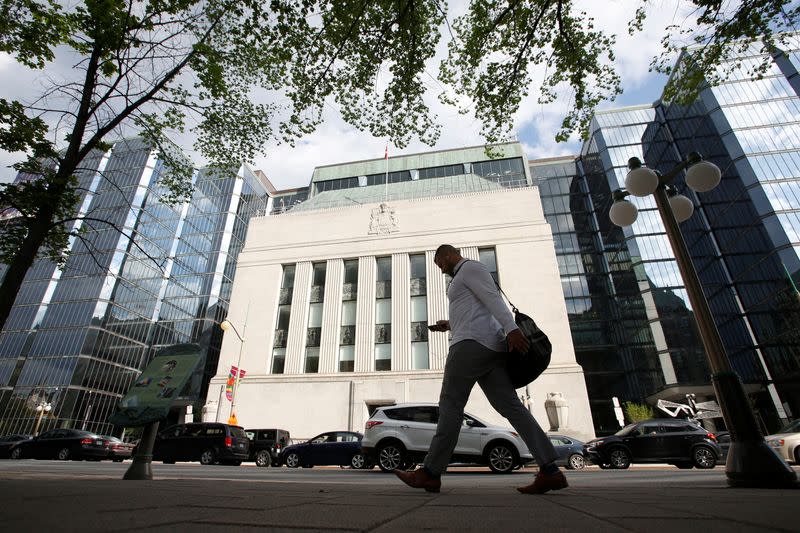Canadian banks brace for second-half uncertainty as they cling to rate cut hopes

By Nivedita Balu
TORONTO (Reuters) - Canadian banks are bracing for a few months of uncertainty with loan loss provisions expected to rise if interest rates remain elevated, even as their dealmaking and investment banking business improves, according to executives from major lenders.
Most lenders beat earnings expectations in the second quarter, with the exception of Bank of Montreal, but the six major banks set aside a combined C$4.36 billion in loan loss provisions, 26% higher than a year ago.
For some banks, weakness in their auto loan books, commercial real estate portfolio and exposure to the transportation sector added to loan loss pressures.
"If rates remain where they are and play out as expected with just a few rate cuts, then provisions are likely going to be elevated for at least the next quarter or two," Veritas Investment Research analyst Nigel D'Souza said, adding that he expects credit losses to peak no earlier than early 2025.
The Bank of Canada, which has raised rates 10 times since 2022 as it battled rising inflation, makes its next decision on June 5.
Some bank executives said they expected rate cuts beginning this summer in Canada and later this fall in the U.S., with about 100 basis points in cuts by year-end in Canada.
Money markets see an 81% chance of a 25 bps rate cut in June, with two more cuts later in the year fully priced in, for a total of 75 bps in cuts by December.
"The expectation of central bank rate cuts has led to strong equity market returns this year, and should also have positive implications for loan growth and M&A deal flow, while also providing relief for Canadians," Royal Bank of Canada CEO Dave McKay said on an earnings call.
Bank of Nova Scotia executives agreed, noting that rate cuts in Peru and Mexico, where it operates, over the last few quarters have started to provide relief for consumers.
"I think it's going to take probably one to three quarters depending on the consumer for it to really bear fruit" in Canada, Scotiabank Chief Risk Officer Phil Thomas said.
Roughly C$86.2 billion of mortgages are negatively amortizing - in which only the interest on a loan is being paid - for BMO, TD and CIBC, down from C$94 billion in the prior quarter.
CIBC's Chief Financial Officer Robert Sedran noted the bank had managed to lower loan loss provisions in the U.S. commercial banking sector but said high rates will likely lead to an increase in impairment losses in the consumer book in Canada.
"We haven't been relying on a series of interest rate cuts when we provide our guidance," Sedran said in an interview.
(Reporting by Nivedita Balu in Toronto; editing by Jonathan Oatis)


